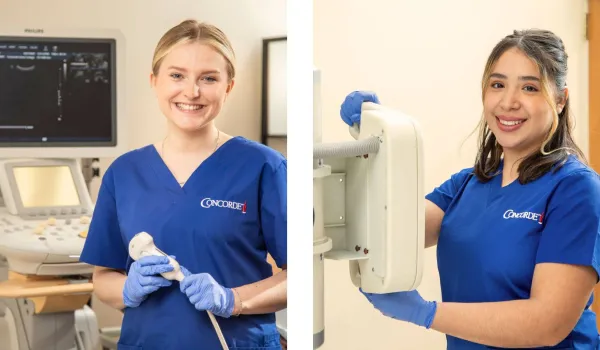Concorde Staff

Since 2009, there has been a greater need for professionals who can take on the responsibility of entering, and when necessary, safely sharing medical records via electronic programs and sources. What's so special about 2009? That's when the Health Information Technology for Economic and Clinical Health Act was passed as part of the massive stimulus package meant to jumpstart the U.S. economy. This act encouraged the use of electronic health records, which are intended to provide:
- Clinical decision support for your health care provider
- Computerized order entry systems
- A health information exchange (HIE)
- Fewer mistakes from a lack of complete records
BENEFITS OF ELECTRONIC HEALTH RECORDS (EHRS)
Included in electronic records are patient demographics, progress notes, reported medical concerns or problems, medications taken and medications the patient may be allergic to, past medical history, a record of immunizations, and other lab and radiology tests and results. Some of the many benefits include:
- Providing accurate, up-to-date information about patients at the point of care
- Securely sharing electronic information with patients and other clinicians
- Convenience, such as the safe, reliable prescription of medicines
- Cost reduction through reduced paperwork and improved health
THE VALUE OF THE HEALTH INFORMATION EXCHANGE
The Health information exchange (HIE) sends valuable patient health information from one organization to another. Although patients usually try to be as inclusive as possible when speaking to and offering their own history to a new physician, what is pertinent to doctors may not seem pertinent to the patient, or the patient might forget information.
Important benefits of the HIE include clinical information that can prevent delay and expense by preventing doctors from running unnecessary and redundant tests as the new physician attempts to get caught up with the situation of the patient. Prior to electronic information, records had to be mailed, which set up many opportunities for human error or failure before the files ended up in the right hands. Now, it is practically a push of the button and the new doctor has a copy of pertinent records.
CHALLENGES WITH ELECTRONIC HEALTH RECORDS
Most of the disadvantages to EHRs are predictable:
- The cost of electronics, hardware and software
- The transition and training of staff, maintenance of electronics without allowing the system to be shut down during peak times of need
- A fear privacy and safety
The privacy issue is of great concern to patients and providers alike. If the United States government can have computers hacked, what about health records?
Fortunately, it has been estimated that over 90 percent of the cost of moving to an EHR system is related to the original purchase and training of staff. Over time, those costs are reduced, although when systems are changed, healthcare organizations can expect those larger expenses again.
ELECTRONIC DATA BRINGS OPPORTUNITY
With expectations for career growth approaching 22% through 2022, Health Information Management is an excellent path for people interested in health, data management, technology and business. As health care and the electronic environment we live in continue to transform our daily lives, the intersection of patient care and data continues to be an exciting place to be.
See how Concorde can help you move toward your goals. Contact us to speak with one of our career counselors so you can begin your career in health care today.

Take The Next Step Towards a Brighter Future
We have a Concorde representative ready to talk about what matters most to you. Get answers about start dates, curriculum, financial aid, scholarships and more!



